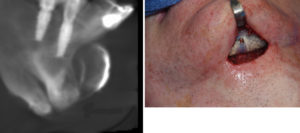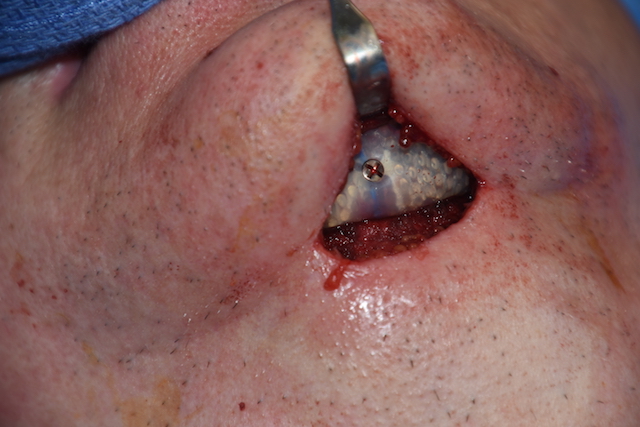Background: Chin augmentation has been done with a variety of implant and graft materials for almost seventy-five (75) years. Like most chin implants done today silicone was the original synthetic material used although it was quite different. Rather than being a solid silicone material it was a gel-filled implant with a similar concept as that of breast implants. They had an outer shell filled with a silicone gel. While that may seem incredulous by today’s chin implant standards it is important to remember such designs were from a long time ago.
Running across a patient with such an old chin implant is very rare today as most patient’s who have had them are no longer around or have had them removed. When confronted with such a patient they will undoubtably have an interesting chin surgery history.
Case Study: This 72 year-old male presented for chin augmentation. He had a history of a jumping bony genioplasty done at age 18 followed by the placement of silicone implant through an intaoral approach done in his twenties. This result apparently satisfied hm for many decades. As he got older and he developed some soft tissue sagging along his small chin and jawline, he presented for one final effort at chin augmentation. A lateral x-ray show a highly positioned chin implant with a radiopaque outline. The underlying chin bone was abnormal in shape. The chin was so highly positioned that it could be seen intraorally as a bulge in the anterior vestibule.

Had this patient been a teenager or young person today he would have have orthognathic surgery for his severe lower jaw deficiency. But he unfortunately never received the best treatment which was not an isolated chin augmentation.But building upon the efforts of long ago, a third and final chin augmentation procedure was successfully done.
Case Highlights:
1) Old silicone gel style chin implants look on x-rays like old silicone gel breast implants do with radiopaque encapsulation.
2) In severe chin recession with an indwelling highly positioned chin implant, additional efforts at chin augmentation require an implant placed below it.
3) A submental approach is best done to identify the lower edge of the bone below the old implant.
Dr. Barry Eppley
Indianapolis, Indiana



